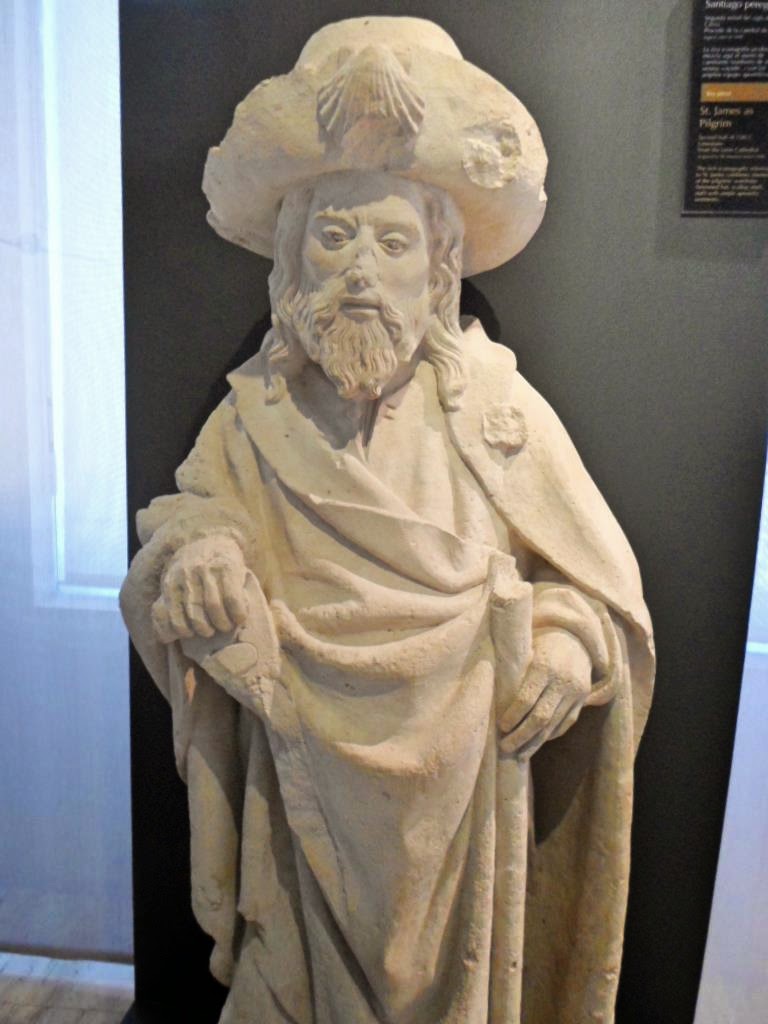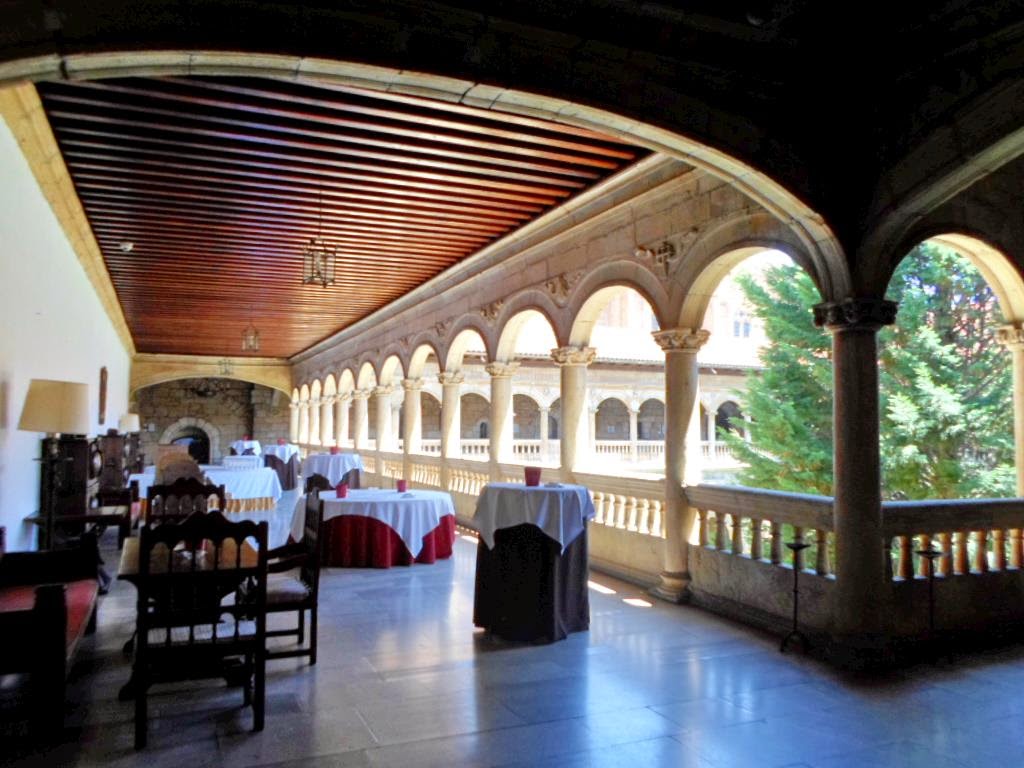Today, I visited the:
1. Cathedral of Leon (also known as Cathedral of Santa Maria) ~ originally constructed in the mid-13th-C, it was completed in the 14th-C with continued restorations done in later decades due to problems with its structural integrity. It was French Gothic inspired with rib-vault ceilings and magnificent medieval stained glass windows (about 125 of them) that cover an area of 1,800 square metres, illuminating the church at different times of the day. (5 euros entrance fee)
2. Museo de Leon ~ it houses several master works such as the Christ of Carrizo, the Votive Cross of Santiago de Penalba, among others (Free entrance)
3. Museo and Pantheon of the Real Colegiata de San Isidoro ~ The star attraction there was the Chalice of Agates (or Queen Urraca's Chalice), said to be THE Holy Grail. Unfortunately, no photography was allowed. (5 euros entrance fee)
4. Convento de San Marcos ~ formerly the motherhouse of the Order of the Knights of Santiago, the 16th-C building is now a parador or luxury hotel.
Leon's truly a beautiful city and I'm glad I stayed an extra day. However, it's back on the Camino for me tomorrow. Peace, my dear friends.
Above: Inside the Cathedral of Leon
Above right: The choir stalls in the Leon Cathedral
Above left: Nuestra Senora La Virgen Blanca (13th-C) in a chapel in the Leon Cathedral; Above right: Virgen de La Esperanza (13th- to 14th-C) in a chapel in the Leon Cathedral ~ the Virgin Mary is depicted as expecting Jesus in her womb
Above left: Natividad del Senor (15th-C) in a chapel in the Leon Cathedral
Above left: The main door of the Cathedral; Above right: The cloister next to the Cathedral
Above left: Local treats from Leon (I bought a few to try); Above right: The tastiest breakfast I've had on the Camino thus far (well-seasoned)
Above right: Museo de Leon
Above right: Edict of Augustus (15 BC) ~ inscription on bronze plaque
Above left: Altar Stone of Diana (165 AD) ~ inscription on marble; Above right: Monumental stone dedicated to Zeus-Sarapis (3rd Century AD) ~ inscription and relief on marbled limestone (a mix of Greek-Roman-Eqyptian greeting and welcome)
Above left: Fossil fern; Above right: A mudejar art
Above left: Another mudejar art; Above right: St. John and St. James
Above left: St. James as a pilgrim (second half of the 15th-C); Above right: Votive Cross of Santiago de Penalba (940 AD)
Above left: Christ of Carrizo (late 11th-C) ~ this cross was sculpted out of ivory and is estimated to be worth 180 million euros; Above right: A carving in arabic
Above left: A carving in hebrew
Above left: Pasta mould (Convent of the Concepcionistas, Leon); Above right: A traditional man's clothing in the 19th-20th centuries in the western and central regions of Leon
Above left: A traditional woman's (and child's) clothing in the 19th-20th centuries in the Leon regions of the Lower Orbigo; Above right: Portrait of Queen Isabella II (1844) ~ possibly commissioned by the city to commemorate the Queen's coming of age
Above left: The Burning of the Books (of St. Gregory the Great) (1540) ~ St. Gregory was accused of squandering the wealth of the Church and it was ordered that his books be burned to dishonor him. However, a Benedictine colleague, Peter, decided to save these writings for he had seen how they were dictated by the Holy Spirit. When Gregory learned of this, he warned Peter that if he made this known, he would die. The relief captured the death of Peter as he revealed the secret.; Above right: The Real Colegiata de San Isidoro, of Spanish Romanesque design (1149)
Above left: The entrance to the museum and pantheon of the Real Colegiata de San Isidoro; Above right: The Treasure House in St. Isidore's Basilica ~ most noteworthy was the Chalice of Agates (or Queen Urraca's Chalice) which I was unable to take a photo of
Above left: The Treasure House in San Isidoro; Above right: The Royal Burial Vault or the Pantheon in San Isidoro (1063) ~ Under a ceiling bearing the original Romanesque frescoes of the 12th-C, 11 kings, 14 queens, and a number of princes, counts, and other nobles rest in eternal peace.
Above: The cloister in San Isidoro
Above left: The Cock Tower in San Isidoro; Above right: The Spanish Renaissance facade of Hostal of San Marcos ~ Now a luxury hotel (parador), it has a humble origin as a pilgrims' hospital that dated back to the 12th-C; the present building was built in the 16th- to 18th-C
Above right: The interior of San Marcos
Above left: Yours truly at the Door of Forgiveness of San Isidoro in Leon
Next post: Day 30 - Leon to Villadangos del Paramo (July 13, 2014)
Previous post: Day 28 - Mansilla de las Mulas to Leon (July 11, 2014)















































































































No comments:
Post a Comment